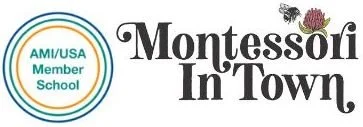FINE MOTOR ACTIVITIES
ART
Scribbling - with crayons or chalk. Thicker crayons like these are great.
Toddler children are still building the proper grasp to hold a pencil, so traditional art supplies like markers or colored pencils are going to be a challenge for them to manipulate.
Clay or Play dough - Children love to explore with play dough or clay.
This is our favorite homemade play dough recipe. It makes a large batch and if you store it correctly should last for a long time. You can show your child different ways to manipulate the clay, like rolling it into snakes or balls, pinching it, squeezing it etc. Clay tools are great, but if you don't have any, just use items from the kitchen like small silverware, rolling pins or tongs.Gluing - Cut out small shapes from different colored papers (you can use wrapping paper, construction paper, scrapbook paper etc.) Place a little bit of white glue in a small container (a bottle cap actually works well). Using a small paintbrush (you can use a cosmetic brush or a q- tip) show your child how you carefully apply glue to the back side of a shape, turn it over, place on the paper and press down to firm in place.
Painting- Use a large piece of paper, washable paint in a small container and a thick brush. You can attach the paper to an easel if you have one, but if you don't you can just place the large paper on the floor. Generally we use just one color of paint, because again this is about exploring the process, and toddlers don't care if they have many options of colors. Demonstrate to your child how you dip the paintbrush in the paint container and apply paint only to the paper.
Stickers- Cut out each individual sticker from the sheet and gently fold back one corner of the sticker. This allows the child to hold the sticker and peel it off more easily. Demonstrate how you peel the sticker off, apply it to the paper sticky side down and press to secure.
Dot Markers- These are nice because they are a good shape for the child's hand. Simply demonstrate your child how to hold the marker (a hold hand grasp with your thumb on top) and how to press down with the tip to create a mark.
MANIPU
LATIVES
Lock and Key- Take a padlock and tie the key to the handle with a ribbon. Show the child how to put the key in the lock hole, turn and open. Then show them how to line the lock back up and squeeze to close.
Nuts and Bolt- You could either use a real nut and bolt if it is fairly large, or a toy set like this one. Slowly show the child how to screw the nut off and on the bolt.
Bead Threading- For a younger child you can show them how to thread pasta on to a chop stick. For an older child you can show them how to thread large beads onto a pipe cleaner to make a bracelet.
Mailbox toy- For an older child you can use a shape sorting toy like this one. Not only is this teaching eye hand coordination and spacial awareness, you can talk about the names of the different shapes. For a younger child, you can take an oatmeal container, cut a circle in the lid and give them poker chips or large buttons to put inside the hole.
Knobbed puzzles- Simple puzzles like this are great to build these skills. Use puzzles with less pieces for younger children and more pieces for older children.
Latch Board- These are great for building fine motor skills. If you are handy you can also make your own.
Basket of Containers- Children love opening and closing containers. Put some containers you can find around the house ( just raid your recycling bin for yogurt containers, small jars etc.) into a basket. Place harder to open containers in the basket for older children (ones that twist open or use interesting latches) and easier ones for younger children. Show the child slowly how to open and close each container.
